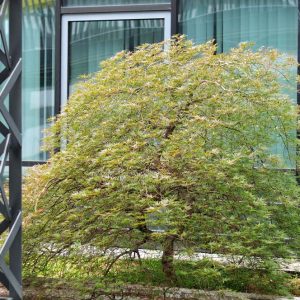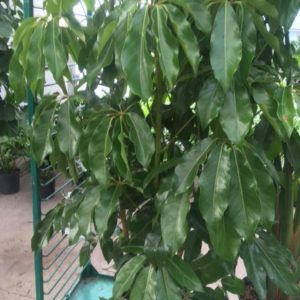Description
Osmanthus – x Osmarea – Siphonosmanthus –
There are about 30 species of slow growing, evergreen shrubs and small trees in this genus. They occur in woodland in Asia, Pacific Islands, and Southern USA. They are grown for their foliage and flowers. The leaves are lance shaped to ovate and thick, rigid leaves which may be edged with stout, even hooked, spiny teeth, held in opposite pairs. The small, tubular, 4 lobed, usually fragrant, white, occasionally yellow or orange flowers are held mainly aaxillary cluster or terminal panicles. The flowers are usually followed by ovoid, blue-black fruits. Osmanthus species and cultivars are ideal for a shrub border or woodland garden, O. delavayu may be wall trained. O. x burkwoodi, O. delavayi, and O. heterophyllus are very good for hedging and topiary.
Grow in moderately fertile, will drained, neutral to acid soil in sun or partial shade, whit shelter from winter sun and wind.
Prone to black mildew, anthranose, olive knot, Verticillium wilt, root rot, and scale insects.
O. yunnanensis – O. forrestii – This large shrub or small tree is initially upright but later becomes spreading, from western China grows 30′ feet tall and at least 30′ feet wide. It produces oblong to ovate-lance shaped, spiny toothed to smooth edged leaves, to 8″ long, have long, sharp points and are leathery, glossy, dark green, spotted black beneath. In late winter and early spring it bears broadly tubular, very fragrant, creamy white flowers, with lobes to 3/8″ across, are held in small, axillary clusters. Flowers are followed by ovoid, dark purple fruit, to ½” long, with a white bloom. Prefers alkaline or chalky soil.
Zones 8-9





